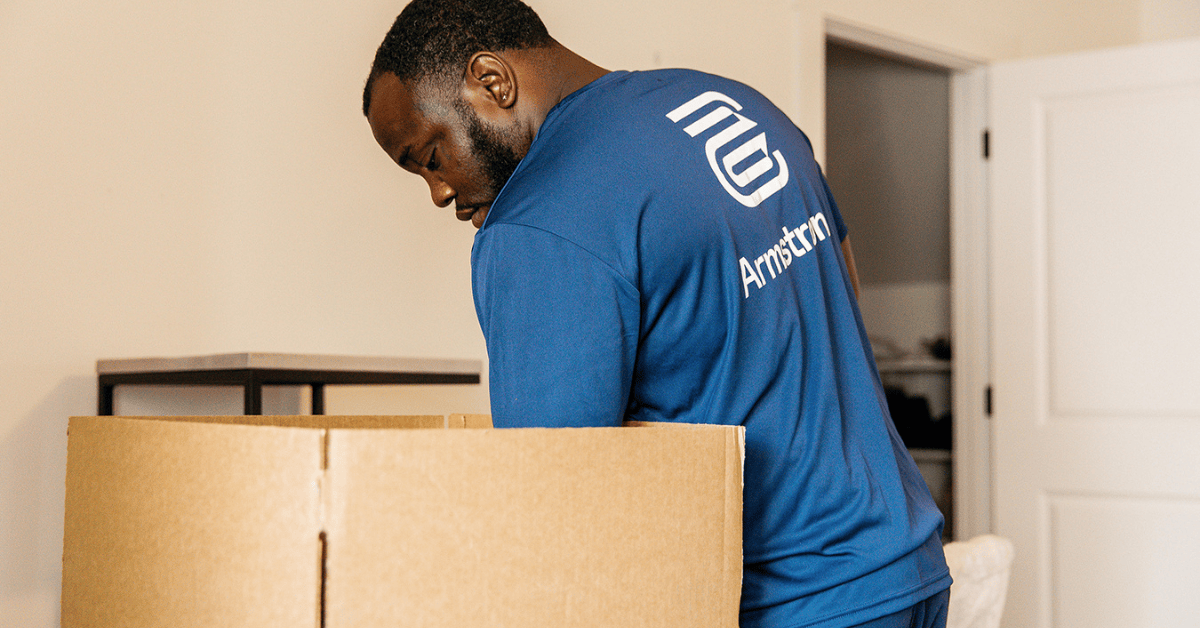How to Pack a House Quickly

Moving is often ranked as one of life’s most stressful events. The chaos of sorting, packing, and coordinating the logistics of relocating can be overwhelming. But what if you could simplify the packing process and make it surprisingly efficient? Whether you’re facing a tight deadline or simply want to minimize the hassle, this guide on how to pack a house quickly is the key to a smoother moving experience.
Preparation: Setting the Stage for Packing Success
Before you even think about grabbing a single box, take the time to lay the groundwork for a successful packing experience. Here’s how:
Declutter and Purge
Packing is the perfect opportunity to assess your belongings and decide what truly deserves a place in your new home. Go through each room and be ruthless in your decisions. Donate, sell, or discard items you no longer use, need, or love. This will significantly reduce the volume of items you need to pack, saving you time and money on moving boxes.
Create an Inventory
Creating a comprehensive inventory will serve as your packing blueprint, helping you estimate the number of boxes and supplies needed, ensuring nothing gets left behind, and allowing you to plan your packing strategy strategically.
Gather Packing Supplies
Running out of supplies mid-packing can derail your progress. Make sure you have everything you need before you start. Stock up on enough packing materials to handle all of your belongings, including boxes, tape, protective wraps, and padding.
Create a Packing Timeline
Develop a realistic timeline for your packing process. Start packing non-essential items well in advance of your moving date. Gradually move towards packing everyday essentials closer to the moving day. Breaking down the task into manageable chunks will prevent you from feeling overwhelmed and ensure a steady pace.
Essential Packing Supplies
- Boxes in Various Sizes: Sturdy cardboard boxes in various sizes are the backbone of any packing endeavor. Small boxes are ideal for heavy items like books, while larger boxes can accommodate bulky but lightweight items like pillows and blankets. Consider using wardrobe boxes to transport hanging clothes and dish boxes with dividers to protect your delicate tableware.
- Packing Tape: High-quality packing tape is essential for securely sealing boxes and ensuring their contents stay put during transport. Invest in a tape dispenser for ease of use.
- Protective Wraps: Bubble wrap and packing paper are invaluable for safeguarding fragile items like glassware, dishes, and electronics. Use bubble wrap for delicate items and packing paper for filling empty spaces and providing cushioning.
- Padding: Packing peanuts, foam padding, or even crumpled newspaper can be used to fill gaps in boxes and prevent items from shifting during the move.
- Markers and Labels: Permanent markers are essential for labeling boxes with their contents and destination room. Clear labels will help you quickly identify the contents of each box during unpacking.
- Box Cutter or Scissors: A sharp box cutter or scissors will be handy for opening boxes and cutting tape.
- Additional Supplies: Depending on your specific needs, you may also want to consider furniture pads, moving blankets, plastic stretch wrap, and dollies or hand trucks for moving heavy items.
In What Order Do You Pack a House?
The most efficient way to pack a house is to start with the least-used rooms and gradually move towards the most frequently used ones. This way, you can avoid the hassle of unpacking boxes before the move to find something you need.
- Attic/Basement/Garage: These areas often contain items you rarely use.
- Guest Rooms: Pack these rooms next, as they’re likely less essential for daily life.
- Living Room/Dining Room: Pack these rooms after the lesser-used spaces.
- Kitchen: Due to the abundance of fragile items, pack the kitchen with extra care.
- Bedrooms: Pack bedrooms towards the end, leaving out essentials you’ll need until moving day.
- Bathrooms: Leave bathrooms for last, packing only what you won’t need in the final days.
Your Blueprint for Quick Packing
Packing up your entire home can feel like a big project, but with a smart approach and some pre-planning, you can definitely breeze through it. Follow this approach to tackle the packing process efficiently and with minimal stress:
Pack Room by Room
A room-by-room packing strategy is a proven method for maintaining order and efficiency during your move. By focusing on one room at a time, you can avoid feeling overwhelmed by the sheer volume of belongings you need to pack. Start with the rooms you use the least, such as guest rooms, attics, or basements. These areas often contain items that aren’t essential for daily living, allowing you to pack as soon as you get the chance.
As you progress through each room, keep similar items together. Pack all your bathroom toiletries in one box, kitchen gadgets in another, and so on. This will make unpacking and organizing in your new home much more efficient. Remember to label each box clearly with its contents and the destination room to ensure a smooth unpacking process.
Pack Strategically
The key is to pack your belongings thoughtfully, considering both the weight and fragility of each item. By distributing heavier items into smaller boxes and lighter items into larger ones, you can prevent boxes from becoming unwieldy and reduce the risk of breakage during transit. Remember, it’s not a Tetris game – leave some space at the top of each box for cushioning to protect your belongings from getting crushed.
When it comes to fragile items, treat them like precious cargo. Wrap each piece individually in bubble wrap or packing paper, using plenty of padding to prevent them from shifting or colliding with other items.
Lastly, clearly marking each box with its contents and destination room is a simple yet essential step that will save you hours of unpacking time.
Specific Packing Tips
- Clothes: Use wardrobe boxes or pack clothes directly in suitcases. Utilize packing paper to fill gaps and prevent wrinkles.
- Kitchen: Wrap fragile items in bubble wrap and use dish towels or packing paper to cushion them in boxes.
- Living Room: Disassemble furniture if possible and wrap pieces in plastic wrap to protect them.
- Bathroom: Seal toiletries and cleaning supplies in plastic bags to prevent leaks.
- Electronics: If you have original packaging, use it. Otherwise, wrap electronics in bubble wrap and place them in sturdy boxes.
Label Clearly
Label each box with its contents and the room to which it belongs. It might seem like a small detail, but it makes a world of difference. This not only saves you time and energy but also helps your movers (if you’re using them) place boxes in the correct rooms, making the entire unloading process much smoother.
Go beyond just writing “Kitchen” or “Bedroom.” Be specific about the contents of each box. For example, instead of labeling a box “Kitchen,” label it “Kitchen – Pots and Pans” or “Kitchen – Utensils.” This extra level of detail will be a lifesaver when you’re searching for a specific item later on.
Create an “Essentials” Suitcase
One of the most crucial steps in the packing process is preparing an “Open First” suitcase. This will be your lifeline during the first few days in your new home, containing all the essentials you’ll need before you have the time or energy to fully unpack.
Think of it as your moving day survival kit. Pack it with items you’ll need to access quickly and easily, such as toiletries, toilet paper, a change of clothes, basic kitchen supplies, medication, phone chargers and important documents.
Enlist Help
Moving is a big job, and asking for help is okay! When disaster strikes, also put in mind emergency moving assistance for possible home disaster. Don’t hesitate to reach out to friends and family members for assistance with packing. Many hands make light work, and having extra help can significantly speed up the process and make it more enjoyable.
Assign tasks to different people, such as packing specific rooms, wrapping fragile items, or labeling boxes. You can even make it a fun social event with snacks and music to keep everyone motivated.
Pro Tips for Packing Quickly
- Take Pictures of Complex Setups: Photograph the back of your TV or electronics for easier reassembly.
- Keep Hardware Organized: When disassembling furniture, place screws, bolts, and other hardware in a small labeled bag and tape it securely to the corresponding furniture piece.
- Utilize Suitcases and Bags: Pack clothes, shoes, and other soft items in suitcases, duffel bags, and backpacks. This will save you from using additional boxes.
- Roll Clothes to Save Space: Rolling clothes instead of folding them can help you fit more in a suitcase or box.
- Pack Books Strategically: Pack books in small, sturdy boxes to avoid them becoming too heavy. Alternate the spines and open sides to distribute the weight evenly and prevent damage to the books.
How Long Does It Take for One Person to Pack a House?
The time it takes to pack a house varies significantly depending on the size of the house, the amount of belongings, and the individual’s packing speed. Generally, it can take anywhere from a few days to several weeks for one person to pack an entire house.
Here’s a rough estimate based on house size:
- Studio/1-Bedroom Apartment: 1-3 days
- 2-Bedroom House/Apartment: 3-5 days
- 3-Bedroom House: 5-7 days
- 4+ Bedroom House: 1-2 weeks or more
If you have a lot of belongings or if you’re packing alone, it may take longer. If you’re short on time, consider hiring professional packers to expedite the process.
Consider Professional Movers
If you’ve decided to handle the packing yourself but still want to make your move smoother and more efficient, consider hiring professional movers to handle the transportation of your belongings. This way, you won’t have to worry about renting a moving truck, loading and unloading heavy items, or navigating unfamiliar routes. Professional movers have the expertise and equipment to safely transport your belongings, giving you peace of mind and freeing up your time to focus on other moving tasks.
By hiring movers solely for transportation, you retain control over the packing process, ensuring your belongings are packed according to your preferences and priorities. However, you still benefit from the convenience of having professionals handle the heavy lifting and logistics of the moving process.
When Time is Tight
If you’re facing a tight deadline or simply don’t have the time or energy to pack, many moving companies offer comprehensive services that include both packing and transportation. This can be a lifesaver for busy individuals or families who need to move quickly and efficiently.
Ready, Set, Pack! Get Ready for Your Move
Moving can be an exciting new chapter, and with the right strategies, it doesn’t have to be time-consuming. By approaching your move with a plan, decluttering beforehand, and gathering necessary supplies, you can make the packing process smoother than ever.
And remember, when time is tight or the task feels overwhelming, a reliable moving company can make all the difference in ensuring your belongings arrive safely at your new home. Armstrong is here to make your move as easy as possible. Whether you need assistance with transportation, packing, or the entire moving process from start to finish, our experienced team is dedicated to providing you with an efficient moving experience. Contact us today for a free moving estimate, and let us take the weight off your shoulders so you can focus on settling into your new home.
